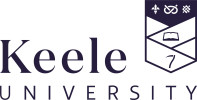© Pint of Science, 2025. All rights reserved.
Cells are the building blocks of life and a big part of science. In this event we look inside the cell to see what powers it: the mitochondria! Also, how we can grow cells to make more of our own body parts, like blood vessels, in the lab! Come along to learn more about the power of cells and take part to win some prizes!
Grow-your-own blood vessels: An alternative to animal experiments
Dr Alan Harper
(Lecturer in Bioscience)
Every 3 minutes, someone in the UK is admitted to hospital with a heart attack. This is caused by unwanted blood clotting in the blood vessels in our heart. Due to the difficulties of studying blood clotting in humans, researchers often study this in animals. In this talk, I want to discuss the commitment scientists have made to reduce animal experimentation. Instead, there are now significant research efforts to find alternative methods. This includes the work we are doing in my lab growing artificial human blood vessels that can be used to study new treatments to prevent heart attacks.
Fat Cells: From cellular to organ function.
Trust Diya
(PhD Candidate)
The fat cell is probably the least understood human cell. Almost always blamed for
obesity, diabetes, and blood vessel diseases the fat cell is now known to be more diverse
and multi-functional than ever before. The classical view of fat cells as reservoirs of fatty
acids has now been overtaken by the knowledge that fat is pivotal in metabolism, the
immune system and the regulation of hormones. This talk will look at the fat cell from a
cultural perspective and explore the different types of fat cells with a focus on regulation
and dysregulation.
obesity, diabetes, and blood vessel diseases the fat cell is now known to be more diverse
and multi-functional than ever before. The classical view of fat cells as reservoirs of fatty
acids has now been overtaken by the knowledge that fat is pivotal in metabolism, the
immune system and the regulation of hormones. This talk will look at the fat cell from a
cultural perspective and explore the different types of fat cells with a focus on regulation
and dysregulation.
Map data © OpenStreetMap contributors.

